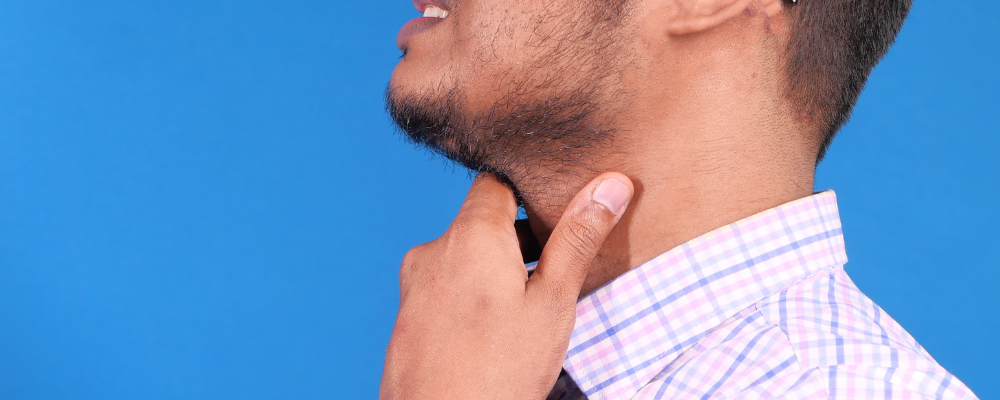In this article, we will answer the question "how can therapy and exercises help with dysphagia" by exploring...
- the causes of dysphagia,
- the types of dysphagia, and
- how therapy and exercises can help.

Understanding Dysphagia
Dysphagia is a condition where people have trouble swallowing or can’t swallow at all. Potential complications of dysphagia include choking, aspiration pneumonia, malnutrition, dehydration, and airway obstruction.
It can affect anyone and may be caused by several factors, including:
- Neurological conditions, like stroke, Parkinson’s disease, and multiple sclerosis, that can affect the muscles and nerves used in swallowing;
- Muscular conditions, such as muscular dystrophy, that can weaken facial muscles or throat muscles;
- Structural issues caused by cancer or gastroesophageal reflux disease (GERD) that can narrow the esophagus or make other changes in the body;
- Certain medications that may cause dry mouth or other side effects making swallowing more challenging; or
- Aging, which can lead to changes in the muscles and nerves used for swallowing, making it more difficult to eat and drink.
Dysphagia vs Dysphasia
These two terms that are often confused with each other, but they actually refer to two different conditions. Dysphagia refers to difficulty or discomfort with swallowing, while dysphasia refers to difficulty with language and communication caused by neurological disorders such as stroke, brain injury, or dementia. It manifests as difficulty finding words, understanding language, or difficulty with reading and writing. Although the conditions may be caused by some of the same underlying factors, they affect different aspects of communication and swallowing.
Types and Symptoms of Dysphagia
Dysphagia is classified into two main types: oropharyngeal and esophageal dysphagia. Symptoms and diagnosis can vary depending on the type of dysphagia present.
Oropharyngeal dysphagia occurs when there is a problem moving food from the mouth to the throat. This can be caused by neurological disorders such as Parkinson’s disease, stroke, or muscular problems in the tongue, soft palate, or throat. Symptoms of oropharyngeal dysphagia can include coughing, choking, the sensation of food getting stuck in the throat, and frequent complaints of sore throats after eating.
Weight loss can also be a result of poor nutrition intake.
Diagnosis usually involves an evaluation by a Speech-Language Pathologist (SLP) who will assess muscle strength and coordination of the muscles involved in swallowing, as well as look at the patient’s medical history. Imaging tests such as X-ray and endoscopy may also be used to help diagnose esophageal dysphagia.

Treatment Options Available
Treatment varies depending on the underlying cause and severity of the condition. Here are some common treatment options:
-
- Dietary modifications: It is usually advised to modify the texture and consistency of their food and liquids if the person is experiencing difficulty with solid foods. This could include pureed or soft foods, thickened liquids, or smaller bites.
- Feeding tubes: Tube feeding may be recommended if the person is unable to swallow safely or is not getting enough nutrition from food and liquids.
- Medications: Depending on the cause, medication may be prescribed to reduce inflammation or improve muscle function.
- Surgery: In some cases, surgery may be necessary to correct structural issues or remove tumors that are causing dysphagia.
- Lifestyle changes: Certain lifestyle changes may help improve symptoms, such as avoiding alcohol and smoking, maintaining good oral hygiene, and sitting upright while eating.
- Swallowing therapy: A speech therapist can provide exercises to improve swallowing function and coordination of the muscles involved in swallowing.
It is important to note that the treatment for dysphagia varies depending on the individual case, and a healthcare provider will recommend the most appropriate treatment based on the underlying cause of the condition

How Therapy and Exercises Work
If you are experiencing difficulty swallowing, it is important to see a Speech-Language Pathologist (SLP) for evaluation and diagnosis. The speech pathologist will assess your ability to swallow and identify any underlying causes of your dysphagia. Based on your individual needs, they will develop a treatment plan that may include exercises to improve swallowing function.
These exercises work by targeting the muscles and nerves involved in swallowing, improving muscle strength and coordination, and reducing symptoms such as coughing, choking, or food sticking in the throat.
Here’s how some of the exercises work:
-
- Mendelsohn maneuver: This targets the muscles involved in lifting and lowering the larynx during swallowing, which can improve the opening of the esophagus and increase the time the upper esophageal sphincter remains open.
- Supraglottic swallow: This helps improve the closure of the larynx during the swallow, which can prevent food or liquids from entering the airway.
- Effortful swallow: This targets the muscles involved in squeezing the throat and tongue together tightly, which can improve the strength of the muscles used in swallowing.
- Tongue base retraction: This targets the muscles at the back of the tongue, which can help open the upper esophageal sphincter and improve swallowing.
- Shaker exercise: This targets the muscles involved in swallowing and strengthens them, which can improve coordination and reduce symptoms.
- Thermal-tactile stimulation: This technique uses different temperatures and textures of food to stimulate the muscles involved in swallowing and improve sensory awareness, which can improve the coordination of swallowing.
Therapy and exercises can help improve the ability to swallow safely and decrease the risk of aspiration of food.
Success rates and potential complications
It is important to note that therapy and exercises can have potential complications and side effects. For example, some exercises may cause discomfort or fatigue in the muscles involved in swallowing. Additionally, changes in diet or food consistency may require significant adjustments to a person’s eating habits, which can be challenging.
The success of therapy and exercises for dysphagia depends on many factors, including the underlying cause, the severity of the symptoms, and the individual’s response to treatment. In more severe cases, it may not be possible to completely reverse the symptoms. In general, however, many people with dysphagia are able to make significant improvements in their ability to eat and drink safely and comfortably with the help of therapy and exercises.
Before starting any treatment plan, it is important to discuss possible risks with a healthcare provider. Working closely with an SLP is also important to ensure exercises are performed correctly and safely to reduce the risk of complications. It is essential to work with your healthcare team to manage potential complications and ensure an effective treatment plan.
If you or anyone you know is experiencing difficulty swallowing, schedule a talk with one of our Speech-Language Pathologists to know more about your best course of action.




